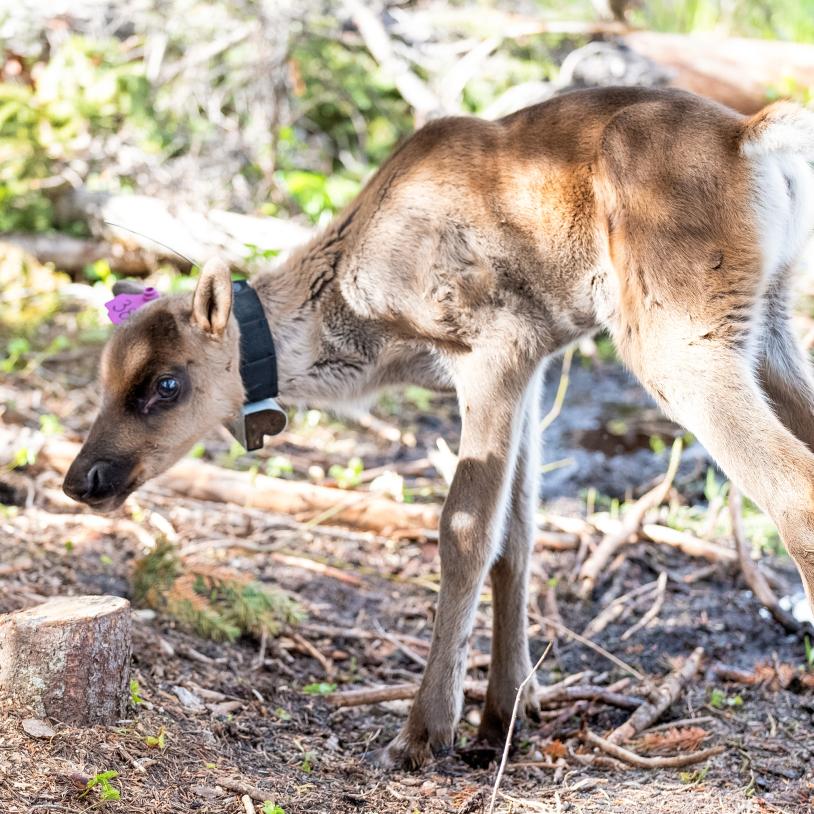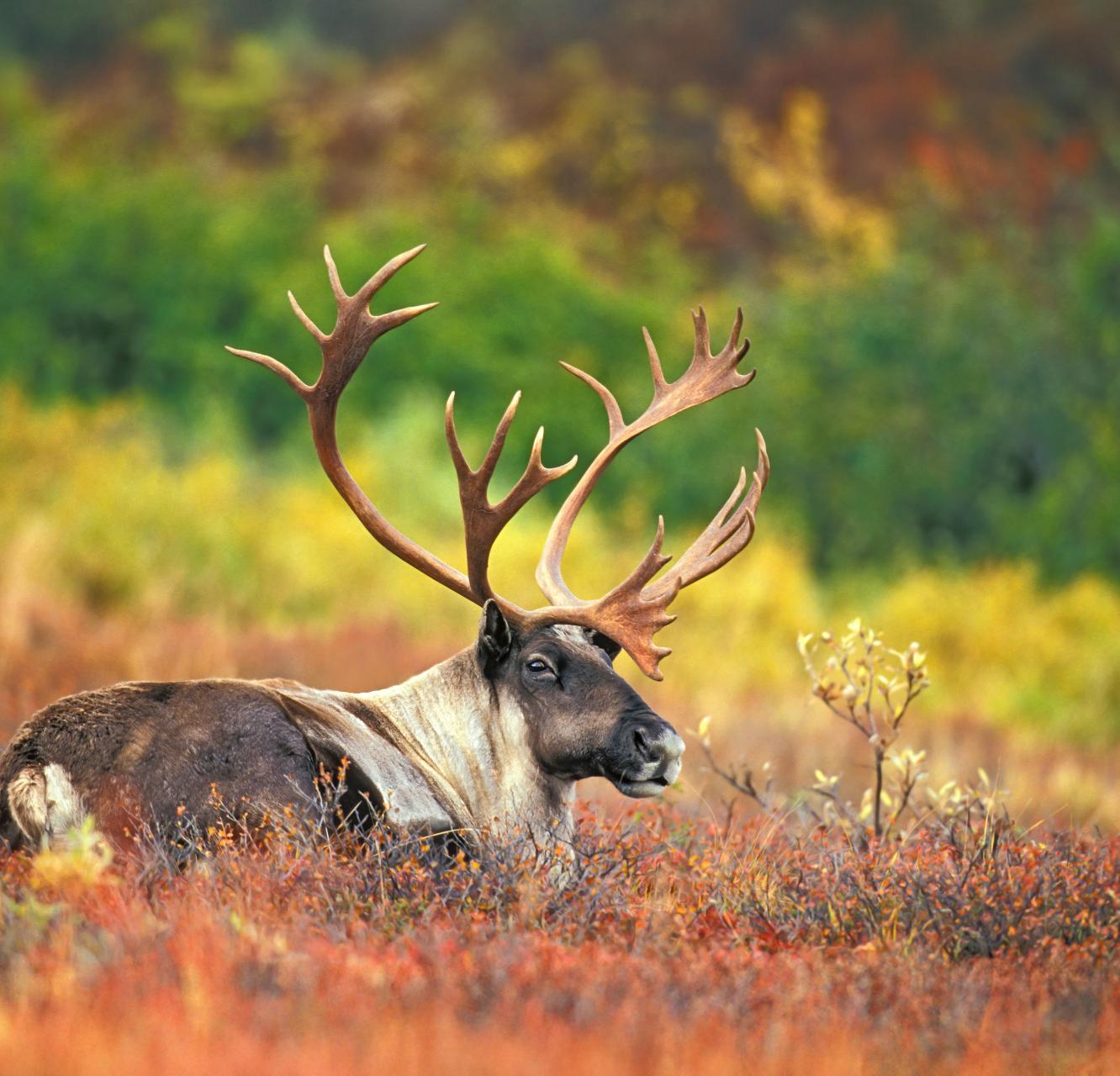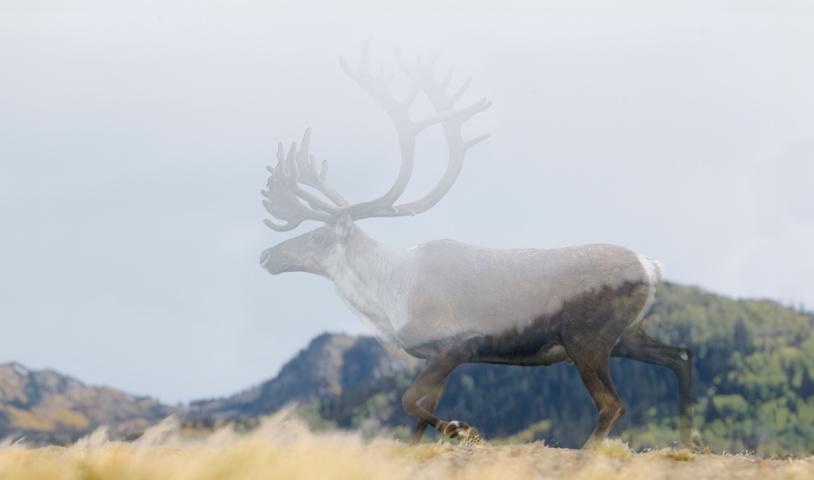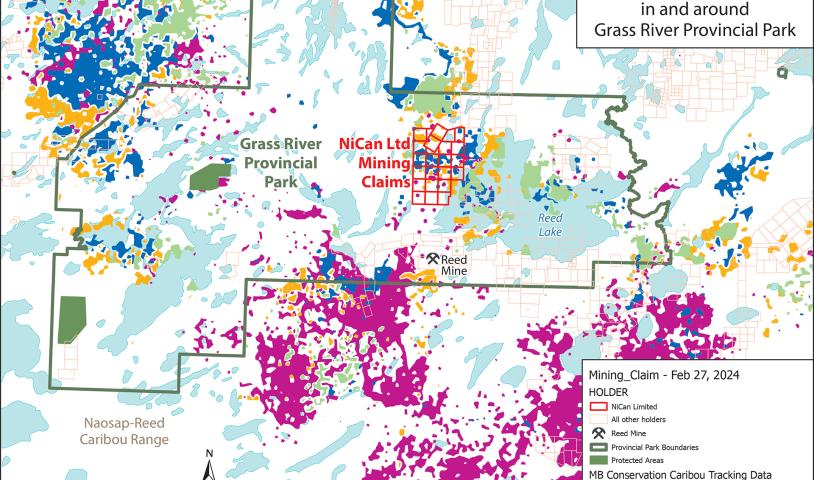Woodland caribou habitat destroyed, caribou facing unknown future
Thursday, August 19, 2010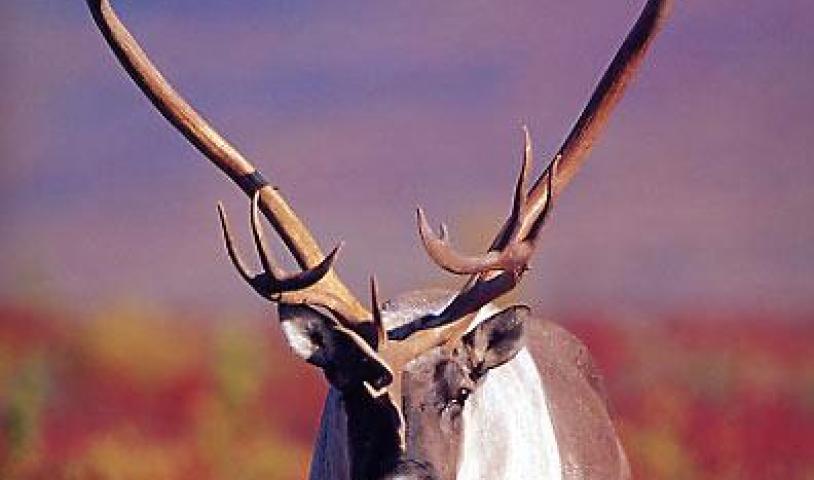
In June 2010, a 50,000 hectare forest fire burnt the forest northwest of Grass River Provincial Park, halfway between Flin Flon and The Pas. According to Manitoba government caribou data, this region was the core habitat of the NAOSAP woodland caribou range. Caribou are very susceptible to disturbance in their habitat, and can not live in areas burnt by fire. The forests surrounding this fire are being fragmented by industrial logging and mining operations, which caribou also avoid.
Due to the unusually large size of the forest fire, and the intensity of industrial activity surrounding the NAOSAP core habitat, the Wilderness Committee and Manitoba Wildlands are calling on the Manitoba government to pause all industrial activity through the next four important caribou activity cycles—fall breeding, winter foraging, spring migration, and summer calving.
After this cycle, it may be possible to determine the effects of the forest fire on the ability of caribou to find safe habitat and successfully rear their calves.
Manitoba Liberal Party Leader Jon Gerrard is calling on the Minister of Conservation and the NDP to provide immediate protection to the NAOSAP herd by pausing industrial development for one year.
“I want the NDP to take urgent action on creating a long-term conservation plan for Manitoba's Woodland Caribou herds and that this plan should include the following measures:
− Annual census of the most at risk herds as determined by a working group of stakeholders including conservation, First Nations, Metis and environmental stakeholders
− Complete provincial census of Woodland Caribou every two years
− More stringent guidelines for industrial development in Woodland Caribou migratory, foraging, calving areas.”
Photo Credit: Terry Parker (WC Files)
